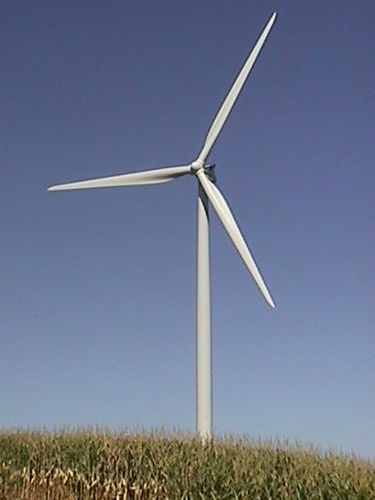The opportunity to pull Michigan out of its economic slump and deal with climate change is right in front of us.
"Michigan is one of the key places on earth where we can turn this around," said Peter Sinclair, an award-winning graphic artist, illustrator, animator, long-time environmentalist and blogger of Climate Crocks.
"[Green technology] can become the spear point of a major industrial revolution more impacting than the computer revolution."
He spoke recently at the Kalamazoo Nature Center about the effects of greenhouse gases (GHG) on the natural cycles of the earth and what we can do about it.
Millions of young people prepared for jobs in the emerging green
technology could make a huge difference on our world in much the same
way that young people were inspired by President Kennedy's call to put a
man on the moon, said Sinclair.
"We need that kind of national mission now!" said Sinclair who contends
that green technology can help the planet and create a new, green
economy.
Many people fear that any change from our current fossil fuel economy
will mean that we will have to live in caves, candlelight and be without
cars. Many detractors and non-believers in climate change play on that
fear, too. Here, too, the reality differs from the rhetoric.
Dow Chemical in Midland has been progressively reducing its carbon
footprint and making money from improved energy efficiency, said
Sinclair. Between 2009 and 2010 the Fortune 500 company saved $760 million.
This came about in 1990 when the company made a $2 billion investment
and designed a sustainability strategy. It has resulted in $9.4 billion
in savings, with a $7 billion net savings.
"Solar shingles" can be put on the roofs of new "zero-energy houses."
They use 70 percent less energy than today's houses -- and then generate
enough energy to be sold to other users. These shingles are made in
Saginaw and they have attracted other solar fabrication companies to
move into Michigan.
Upgrading the insulation of old houses is another opportunity, and
although the cost is still high, it is declining precipitously. Part of
the reason why is that some companies like Sungevity are adopting a
"solar leasing model" where panels are installed for free, the homeowner
rents them and unused energy goes back into the grid.
Actually, the price of solar energy has fallen 5 percent every year
since 1970 while the cost of electricity has risen by 5 percent every
year in the same period, according to Andrew Birch, CEO of Sungevity.
Sinclair called solar technology a definite paradigm shift where we can
generate more energy than we use. This is possible because it takes 15
terawatts to supply the earth's power needs for one year while the sun
provides 6,000 times more energy (8,600 terawatts) every day -- for
free, according to Sungevity.
Today, there are one million solar roofs operating in America and there is a lot of potential for growth, said Sinclair.
While Sinclair admitted that the zero-energy house is not the total
answer to our climate change problems, green buildings are the direction
we need to go. For more than a decade, Leadership in Engineering and
Environmental Design (LEED) has been the standard to which green
builders aspired. Now, a new standard has emerged called the "living
building." It generates all of its own energy with renewable non-toxic
resources, captures and treats all of its water, and operates
efficiently and for maximum beauty.
The Ford Rouge Plant in Dearborn has a "living roof" where several
varieties of sebum (a mossy-looking plant) are trained to grow up the
factory's outer walls to keep the factory warm in the winter and cool in
the summer.
This came about when Ford called in acclaimed "eco" architect Bill McDonough in 2004 to help with the redesign of their Rouge plant in Dearborn where the F150 pick-up truck is made. As a result, the factory now has one of the biggest green roofs in the world.
Roger Gaudette of Ford Land talks about the idea behind the green roof in this video.
Wind turbines provide yet another energy-producing alternative and
Michigan once again is well-positioned to take advantage of this
technology. Pigeon (in the Thumb area) is a leader in generating wind
power while hundreds of turbines are going up in Gratiot County (south
of Mt. Pleasant) with plans for more in Montcalm County (east of Gratiot
County).
Sinclair said that there is enormous potential for the Great Lakes
region to equal the wind generation expected of the Great Plains, often
dubbed the "Saudi Arabia of wind." The East Coast alone has enough wind
to power the whole country, he said.
Skeptics may ask, however, what happens when the wind stops blowing?
"This is a non-problem," said Sinclair who explained that every energy
source is intermittent and that they are designed to store energy for
those down times. The same thing can happen with wind.
He added that Michigan has excellent geology for underground caverns where energy may be stored.
Several community colleges have already created educational training
programs for wind energy technicians who can make $22 to $33 per hour,
said Sinclair. That would command salaries of $40,000 to $60,000 per
year.
There is also a need for people who can build, design and transport windmills.
"This is good for Michigan and it could create 30,000+ new jobs -- if we
want them," said Sinclair. "The window is now open but it can close.
Right now, we are dithering."






